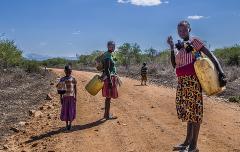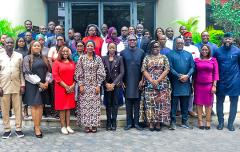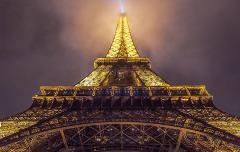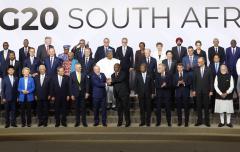SEforALL Results And Deliverables: Partners Making Progress (part 2)
Bank of America and green bonds
At Rio+20 in 2012, Bank of America set the goal to commit $50 billion over ten years to finance energy efficiency, renewable energy, energy access and other activities that advance the low-carbon economy. In the first year, it delivered $5.5 billion towards this goal. Bank of America issued the world's first $500 million benchmark-size corporate green bond in November 2013, part of a significant increase in green bond transactions, now supported by 25 banks around the world.
African Development Bank
Since Rio+20, the African Development Bank has approved projects totalling around $2 billion that address the SEforALL objectives and mobilized co-financing totalling around $4.5 billion. Furthermore, the Bank's Sustainable Energy Fund for Africa (SEFA) mobilized additional financing and incubated the Africa Renewable Energy Fund, which saw a first close at $100 million in February 2014.
Power Africa
Announced by US President Barack Obama in 2013, Power Africa is an initiative to double the number of people with access to power in sub-Saharan Africa. Power Africa is working with partners in six focus countries — Ethiopia, Ghana, Kenya, Liberia, Nigeria and Tanzania — to add more than 10,000 megawatts (MW) of clean, efficient electricity generation capacity. For the first, five-year phase the US Government has committed more than $7 billion in financial support and loan guarantees. Every dollar the US Government has committed to Power Africa has leveraged 2 dollars in private sector investment commitments. Power Africa's financial partners have committed to providing over $14 billion in project finance through direct loans, guarantee facilities and equity investments.
European Commission
In April 2014 the European Commission announced the results of the first call for proposals from NGOs, governments and the private sector to receive EU funding to bring electricity to the world's poorest citizens. Grants of €95 million have been awarded for 16 projects across nine African countries to provide access to energy in rural areas, an amount which will be translated (through co-financing support by applicants) into projects costing more than €155 million that will bring electricity to more than 2 million people in Burkina Faso, Cameroon, Eritrea, Liberia, Madagascar, Rwanda, Senegal, Sierra Leone and Tanzania. The EU is planning new grant commitments totalling €3 billion to support sustainable energy projects in about 30 countries, which would leverage investments between €15-30 billion.
European Bank for Reconstruction and Development
Of the $8 billion in sustainable energy financing that EBRD committed at Rio+20 for 2012-14, $7.3 billion in financing had already been reached at the end of the first quarter of 2014, and EBRD fully expects to exceed the $8 billion financing target by the end of the year. A total investment target set in Rio of $30 billion for 2012-14 has already been achieved, with total investment related to sustainable energy projects financing over the period reaching $40.7 billion. These financing results have been achieved to support the implementation of 328 renewable energy and energy efficiency projects across the region of operations of the EBRD which covers Central and Eastern Europe and the Southern and Eastern Mediterranean. The high leverage achieved by EBRD financing reflects the high share of private finance mobilized by these projects. Energy efficiency projects involve large-scale energy intensive industries, agribusiness, commercial property, SMEs, power utilities and municipal infrastructure utilities. The implementation of these projects is expected to lead to a reduction of CO2 emissions of 19.6 million tonnes per year.
The Energy and Resources Institute (TERI)
At the Rio+20 Conference, TERI made a commitment, under SEforALL, to impact 10 million lives by 2018, providing them access to lighting through solar and other clean technologies. In the first two years, TERI has reached close to 2.5 million people, and, working with partners, expects to impact close to 2 million lives each year going forward, achieving its target by 2018.
Gas Flaring Reduction
Aiming to cut emissions by reducing flaring of natural gas, instead capturing that gas for power, the Global Gas Flaring Reduction Partnership (GGFR), in which the World Bank is a major partner, has assisted Mexico's Ministry of Energy, Pemex, and the country's regulators in achieving a 66% reduction in gas flaring in just two years. In Iraq, GGFR helped the government develop a market for gas that otherwise would have been flared. In Azerbaijan, the national oil company (SOCAR) reduced gas flaring and venting by almost 50% in two years. In Nigeria, flaring was reduced by more than 73% in 2007-2013, and GGFR partners are investing several billion dollars to cut gas flaring by 4 bcm over five years. In Gabon, GGFR assisted the government in reaching its objective of reducing flaring by 60%. In Kuwait, the World Bank's technical advice to the national oil company helped it achieve a gas flaring level of less than one percent. GGFR partner Eni SpA (Italy) reports it has reduced the volume of gas sent to flaring by 65% between 2007 and 2013; in the Republic of the Congo, the flaring down project in the M'Boundi field was completed in March 2014, when flaring reached zero.
OPEC Fund for International Development (OFID)
Towards its SEforALL commitment, OFID's ministerial council has approved an amount of 1 billion dollars for its “energy for the poor” initiative, in a revolving fund to be replenished as soon as it is fully utilized.
Eni SpA
The Italian petrochemical company Eni SpA has made significant progress towards the commit-ments registered at Rio+20. Construction is underway for one of the largest industrial complexes in the world for the production of chemical products from renewable sources; the production of biolubricants will come into operation in June 2014. By 2016, they will have a total installed capacity of 350 thousand tons per year of bio-products, with an investment of around 500 million euro. In the Republic of the Congo, where Eni works, a new grid extended the electricity supply to cover an area inhabited by around 350,000 people, or 40% of the population of Pointe-Noire.



